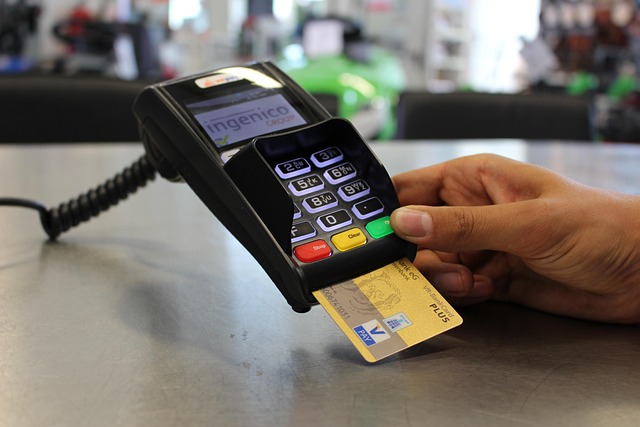Category: Flexible Business Lines of Credit
Flexible Business Lines of Credit: Unlocking Liquidity and Growth
Introduction
In today’s dynamic business environment, accessing flexible financial resources is a cornerstone for companies seeking to thrive. Among the various credit options available, Flexible Business Lines of Credit (FBLOC) stand out as a game-changer, offering businesses unparalleled liquidity and adaptability. This article delves into the intricacies of FBLOC, exploring its definition, global impact, economic implications, technological integrations, regulatory landscape, and future potential. By the end, readers will grasp why this innovative credit mechanism is reshaping financial strategies worldwide.
Understanding Flexible Business Lines of Credit
Definition: Flexible Business Lines of Credit (FBLOC) represent a dynamic financing option tailored for businesses, allowing them to access credit facilities that can be adjusted based on their cash flow and operational needs. Unlike traditional fixed loans, FBLOC provides a flexible borrowing limit that fluctuates in response to the borrower’s performance and market conditions.
Key Components:
- Adjustable Borrowing Limit: The cornerstone of FBLOC is its adaptable credit line, which can increase or decrease depending on predefined criteria, such as revenue growth, inventory levels, or industry benchmarks.
- Real-time Monitoring: Financial institutions employing FBLOC utilize sophisticated analytics and data visualization tools to track borrower performance continuously, enabling them to make informed adjustments to the credit line.
- Customized Terms: Each FBLOC is customized to fit the unique needs of a business, incorporating factors like industry type, revenue history, and future projections.
Historical Context: The concept of flexible credit lines has evolved over time, gaining traction in the mid-2000s as businesses sought more agile financing options to navigate economic uncertainty. Traditional banking models, characterized by rigid loan terms, struggled to keep pace with the dynamic nature of many modern businesses. In response, financial institutions developed FBLOC to bridge this gap, offering a more adaptable and responsive credit solution.
Significance: FBLOC plays a pivotal role in fostering business growth and stability:
- Cash Flow Management: Businesses can access capital when needed, ensuring they have the liquidity to seize opportunities or manage unexpected expenses without being burdened by fixed debt obligations.
- Adaptability: The ability to adjust credit limits according to market fluctuations and operational performance enables businesses to remain competitive and responsive.
- Reduced Financial Risk: FBLOC minimizes exposure for both lenders and borrowers through its dynamic nature, as the risk is spread across a range of potential credit utilization.
Global Impact and Trends
FBLOC has left an indelible mark on global financial markets, with its adoption varying across regions based on unique economic conditions and business cultures.
North America: The United States and Canada have been early adopters, with a significant portion of medium to large enterprises leveraging FBLOC to manage seasonal fluctuations and fund expansion plans. According to a 2022 survey by the Federal Reserve Bank of New York, nearly 40% of US businesses reported using some form of flexible credit line in the previous year.
Europe: In the European Union, small and medium-sized enterprises (SMEs) have shown a preference for FBLOC due to their ability to access capital without stringent collateral requirements. The EU’s focus on promoting entrepreneurship and innovation has further fueled the adoption of these flexible financing options.
Asia Pacific: Countries like China and Japan have witnessed a surge in FBLOC usage, driven by rapid economic growth and a culture of innovation. In China, for instance, tech-driven startups often rely on flexible credit lines to fund research and development, highlighting the synergy between technology and financial agility.
Emerging Markets: Nations in Africa and Latin America are also embracing FBLOC as a means to bridge the gap in traditional banking services, empowering SMEs to access capital for growth and expansion.
Economic Considerations
The impact of FBLOC extends beyond individual businesses, influencing broader economic systems and market dynamics.
Market Liquidity: FBLOC contributes to increased market liquidity by providing businesses with accessible credit, fostering investment opportunities, and encouraging entrepreneurial activity. This, in turn, can lead to higher stock prices and improved access to capital for both established companies and startups.
Investment Patterns: Businesses utilizing FBLOC often demonstrate more flexible investment strategies. They are better equipped to take advantage of emerging market trends, fund research and development initiatives, or acquire assets during periods of economic uncertainty. This dynamic approach can drive innovation and create a competitive edge.
Economic Growth: By enabling businesses to navigate financial ups and downs, FBLOC plays a crucial role in supporting sustainable economic growth. It allows companies to expand during prosperous times while remaining resilient during downturns, contributing to overall business confidence and stability.
Technological Advancements
Technology has been instrumental in shaping the evolution of FBLOC, enhancing its efficiency, accessibility, and impact.
Data Analytics: Advanced data analytics and machine learning algorithms enable financial institutions to process vast amounts of data, predict borrower behavior, and make informed decisions regarding credit line adjustments. This real-time analysis ensures that FBLOC remains dynamic and responsive.
Blockchain and Smart Contracts: The integration of blockchain technology is revolutionizing FBLOC by providing a secure, transparent, and automated platform for credit agreements. Smart contracts can automatically execute predefined terms, reducing the need for intermediaries and speeding up transactions.
Mobile Banking: Mobile banking apps offer borrowers convenient access to their FBLOC, allowing them to monitor credit limits, make payments, and request advances on-the-go, further enhancing liquidity and control.
AI-Powered Customer Service: Chatbots and virtual assistants powered by artificial intelligence (AI) provide instant support to borrowers, answering queries related to credit lines, interest rates, and repayment options, thereby improving customer satisfaction.
Regulatory Landscape
The regulatory environment surrounding FBLOC varies across jurisdictions but generally aims to balance innovation with consumer protection.
Licensing and Oversight: Financial institutions offering FBLOC are subject to licensing requirements and industry regulations. These include capital adequacy rules, anti-money laundering (AML) measures, and know-your-customer (KYC) procedures to mitigate risks and ensure ethical lending practices.
Interest Rate Regulation: Some countries have implemented caps or flexible rate structures for FBLOC to protect borrowers from excessive borrowing costs, especially during economic downturns.
Data Privacy: With the increasing use of digital platforms for FBLOC, data privacy regulations, such as the General Data Protection Regulation (GDPR) in Europe, play a crucial role in safeguarding borrower information and ensuring transparency.
Future Potential
The future of FBLOC is promising, with technological advancements and evolving market dynamics shaping its trajectory:
- Personalized Financing: AI and machine learning will enable even more customized FBLOC offerings, taking into account not only traditional financial metrics but also alternative data sources like social media activity and online behavior.
- Open Banking: The rise of open banking APIs allows for seamless data sharing between banks and third-party providers, potentially leading to more efficient and competitive FBLOC products.
- Global Standardization: As FBLOC becomes more widespread, there may be a push towards global standardization of terms and regulations, making it easier for businesses to access cross-border credit facilities.
- Sustainable Finance: Integrating environmental, social, and governance (ESG) factors into FBLOC criteria can drive sustainable business practices and align financing with global sustainability goals.
Conclusion
Flexible Business Lines of Credit represent a paradigm shift in financial services, empowering businesses to navigate the ever-changing economic landscape with unprecedented agility. Through technology, data analytics, and innovative lending practices, FBLOC is reshaping the way businesses access capital and manage their financial health. As the global economy continues to evolve, FBLOC will undoubtedly play an increasingly vital role in fostering growth, resilience, and competitiveness worldwide.









